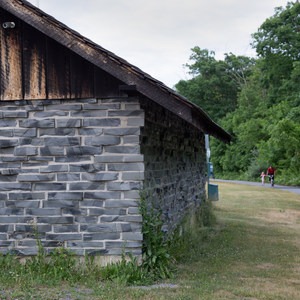You are here
About 50,000 years ago, a chunk of iron and nickel 150 feet across seared through the atmosphere and into the desert floor in what is today northern Arizona. The meteorite exploded and disintegrated when it hit the ground, and some particles buried themselves 3,000 feet deep, while other chunks flew out and landed miles away. What remains today is a mile-wide hole that is the best-preserved meteor crater on earth (thanks to its dry, remote location). Located just off Interstate 40 and the old Route 66, this has been a tourist stop since the 1940s. While it is tempting to consider it just another roadside attraction, it is well worth a few hours of time to see it.
This site would most typically be a national monument or state park, but it is on private land. The good news is that it is a designated National Natural Landmark, and as such it is protected from development much as it would be on federal land. The owners have invested significantly in developing the visitor center and promoting scientific research on the site, and the educational exhibits match the quality of those in national parks.
The visitor center is perched high on the rim of the crater, and it offers inside viewing as well as several outdoor viewing platforms and a short trail only accessible on the guided tours (included with admission). The sight of the crater is awe inspiring, and the history of attempts to mine the buried meteor (unsuccessful) and later scientific efforts to prove that it was indeed formed by a meteor impact (successful) are very interesting. Visible at the bottom are structures related to the excavation efforts as well as the astronaut training that has periodically been done here. Some of the most important research around impact craters and planetary formation has been done on the site.
The area gets extremely high winds. In fact, the current visitor center replaced one that was destroyed by 150 mph winds only three years after opening. The highest wind recorded here was over 180 mph. When the winds are high, the short tours on the rim are not available (no guardrails!). There is an extensive gift shop and a sandwich restaurant on site.








Comments
Sign In and share them.